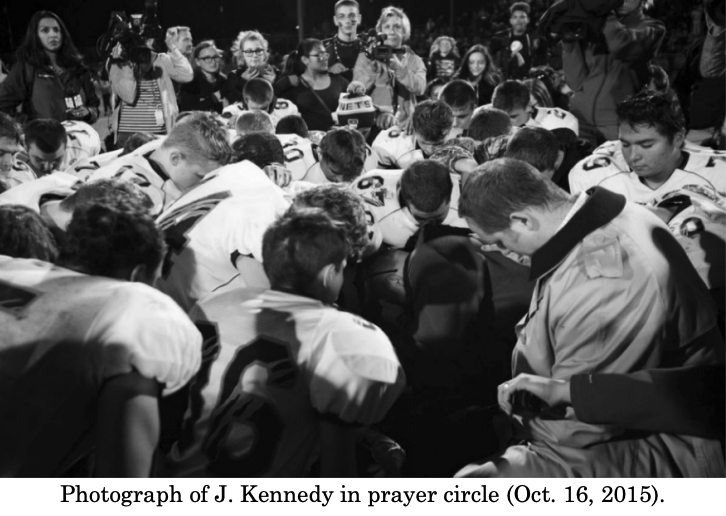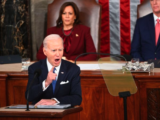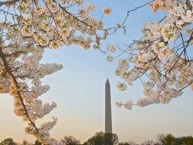There goes democracy … monarchy anyone? –
The Big Picture –
By Glynn Wilson –
ANALYSIS – Donald Trump always said he wanted to “build a wall.” Instead he tore one down, the wall separating church and state.
Just like his hero Putin, he pandered to the Christians, and almost became the dictator he always wants to be.
For more than half a century, the United States Supreme Court was the ONLY institution left in American society where “the people” could turn for protection against the creep of Christian, religious peer pressure into every corner of our lives, including state supported public schools.
Not anymore.
The Trump court — even though Trump himself has never said an honest prayer to any god in his entire corrupt life — just took us all back to where we came from before there was a United States of America.
Many of our ancestors boarded ships and braved rough seas to come to this land because of widespread religious persecution in Europe, where powerful church leaders routinely didn’t just tell people what to think and how to behave, who and how to worship. They literally ordered kings and queens around in the monarchies of old wielding great power over all aspects of politics and life.
Clearly the anti-statitist Catholics we’ve allowed to take over our highest court long to return to that corrupt system and destroy what’s left of our democracy and this Republic.
I say let them stop hiding behind their robes and say what they really mean so we can all have a public debate and vote on it.
So they just used a poor, misled high school football coach in Washington State to accomplish another startling reversal of our rights and laws.
While Congress long ago lost its courage to stand up to the pressure of openly supporting a certain version of Christianity, and many presidential candidates even felt the peer pressure to openly tout their faith on the campaign trail – including Democrat Joe Biden — at least we had the court.
“The First Amendment has erected a wall between church and state. That wall must be kept high and impregnable,” wrote Supreme Court Justice Hugo Black from Birmingham, Alabama, writing for the court in Everson v. Board of Education in 1947. “We could not approve the slightest breach.”
But the country began to change after World War II, and by 1960, we had a popular Catholic president elected in John F. Kennedy. In the new age of television, he had crossover popular appeal, like Elvis and The Beatles.
By 1964, a Baptist preacher got elected as a Republican to the House of Representatives from Birmingham, John H. Buchanan Jr., when all the white people in the suburbs of Jefferson County, Alabama, got mad at President Lyndon Johnson for supporting the Civil Rights Act. Buchanan actively campaigned in churches. I know because I saw him come to campaign at least once in the second largest Baptist church in Alabama at the time, east of Birmingham, in what became the largest unincorporated white flight suburb in the country for a time. It’s mostly Black now.
This practice of campaigning in churches continues in my home state and many others to this day. In Alabama, even voting takes places in churches, a particular breach orchestrated after the attacks on the World Trade Center in New York on September 11, 2001, by the administration of George W. Bush, who openly touted his Christianity in the White House.
When Ten Commandments Judge Roy Moore ran for the U.S. Senate in 2017, he ONLY campaigned in churches, where he and the local preachers could control the crowds and keep the pesky press outside surrounding the buildings, when he was accused of being a pedophile child molester before anybody had ever heard of Qanon.
The man who would win in that election by a margin of 1.6 percent and become Senator Doug Jones, also felt he had to profess his faith, his Christianity, and also campaign in churches.
But back in his day, Buchanan was a smart, educated man, who later came to be known as a “liberal” Republican.
Just as I was coming of age to vote and first got interested in journalism, a far right-wing Republican named Albert Lee Smith challenged Buchanan for that House seat, joining televangelist Jerry Falwell in the “Moral Majority,” and called him “too liberal for Alabama.”
As anyone can see for themselves on his Wikipedia page, Buchanan, who died in 2018, never returned to Alabama after that loss and remained in Bethesda, Maryland to help found a non-profit group called “People for the American Way” along with legendary television and film producer Norman Lear, the late Congresswoman Barbara Jordan, and a group of business, civic, religious and civil rights leaders who were disturbed by the divisive rhetoric of newly politicized televangelists, like Falwell.
That organization joined the Southern Poverty Law Center in 2002 to challenge Roy Moore’s installation of a two-ton carved stone monument of the Ten Commandments in the state Supreme Court rotunda after Moore got himself elected Chief Justice in a campaign with signs all over the state reading “Elect Jesus” and Roy Moore.
I covered that trial for The New York Times and wrote about it for The Christian Science Monitor, then a well respected newspaper out of Boston. A federal judge in Montgomery ordered the monument removed from the building, and Moore was removed from the court for abusing his position and violating the Establishment Clause in the First Amendment.
Monumental clash over Ten Commandments
The wall separating church and state held that day, but cracks and breaches continued to chip away at it.
Thomas Jefferson and most of the others who orchestrated the separation from England and created the United States believed no democracy could survive without a strict wall separating church and state. Just look at what he wrote to the Danbury Baptists in Connecticut after he became the third president in 1801.
“Believing with you that religion is a matter which lies solely between Man & his God, that he owes account to none other for his faith or his worship, that the legitimate powers of government reach actions only, & not opinions, I contemplate with sovereign reverence that act of the whole American people which declared that their legislature should ‘make no law respecting an establishment of religion, or prohibiting the free exercise thereof,’ thus building a wall of separation between Church & State. Adhering to this expression of the supreme will of the nation in behalf of the rights of conscience, I shall see with sincere satisfaction the progress of those sentiments which tend to restore to man all his natural rights, convinced he has no natural right in opposition to his social duties.”
Natural Rights.
Whatever happened to our belief in those? Gone like dust in the wind.
In it’s typical “fair and balanced” manner, showing not the slightest remorse for the decision, The New York Times covered the most recent ruling in the case.
“The Supreme Court ruled on Monday that a high school football coach had a constitutional right to pray at the 50-yard line after his team’s games, the latest step by the court in expanding the place of religion in public life. The vote was 6 to 3, with the court’s three liberal members in dissent.”
Supreme Court Sides With Coach Over Prayers at the 50-Yard Line
The coach has already been fired, for putting the school in Bremerton, Washington, and all its students at risk in a local conflagration of controversy over his blatant practice of disobeying the law at the time to get himself famous, an act which flies in the face of the teachings of the religion he so vehemently wanted to put on public display and take to court.
We will not repeat his name here, because he doesn’t deserve the fame that he’s getting. Nor will we repeat what the majority on the court said, since it is so blatantly wrong that it should not be reported on seriously.
In a powerful dissent of the Catholic majority’s disastrous ruling for democracy, Justice Sonia Sotomayor spelled out how they got it so wrong: In prioritizing the religious rights of a school official over those of his students, who could feel pressure to take part in his blatant show of religious activities, or face negative consequences.
“In doing so,” she wrote, “the court sets us further down a perilous path in forcing states to entangle themselves with religion, with all of our rights hanging in the balance.”
Rachel Laser, the president of Americans United for Separation of Church and State, which represented the school board in the case, lamented what she said was the latest in a series of mounting setbacks eroding the wall between religion and the public sphere.
“Today, the court continued its assault on church-state separation, by falsely describing coercive prayer as ‘personal’ and stopping public schools from protecting their students’ religious freedom,” she said in a statement.
The case of Kennedy v. Bremerton School District pitted the rights of government workers to free speech and the free exercise of their faith against the Constitution’s prohibition of government endorsement of religion and the ability of public employers to regulate speech in the workplace. The decision was in tension with decades of Supreme Court precedents that forbade pressuring students to participate in religious activities.
For eight years, this football coach routinely offered prayers after games, with students often joining him. He also led and participated in prayers in the locker room, a practice he later abandoned and did not defend before the Supreme Court.
In 2015, after an opposing coach told the principal his school that he thought it was “pretty cool” that he was allowed to pray on the field, the school board instructed him not to pray if it interfered with his duties or involved students.
A school official recommended that the coach’s contract not be renewed for the 2016 season, and he did not reapply for the position. The story should have ended there. But he just couldn’t let it go, and had to take the next step in his covet of fame, just like Roy Moore with his Ten Commandments.
Justice Sotomayor accurately described what the coach did over a long time period. She said he “consistently invited others to join his prayers and for years led student-athletes in prayer,” she wrote. In an unusual move, the dissent included photographs showing the coach kneeling with players and others.
Sotomayor said this football coach effectively coerced students into praying with him.
“Students look up to their teachers and coaches as role models and seek their approval,” she wrote. “Students also depend on this approval for tangible benefits. Players recognize that gaining the coach’s approval may pay dividends small and large, from extra playing time to a stronger letter of recommendation to additional support in college athletic recruiting.”
In the process of ruling for the coach and his public prayers, the majority disavowed a major precedent on the First Amendment’s Establishment Clause, Lemon v. Kurtzman. That ruling, in 1971, set out what came to be known as the Lemon test, which required courts to consider whether the challenged government practice has a secular purpose, whether its primary effect is to advance or inhibit religion, and whether it fosters excessive government entanglement with religion.
In Justice Gorsuch’s account, the Lemon test had already been discarded. But Justice Sotomayor wrote that the majority had now overruled it, acknowledging that the test had been subject to frequent criticism by various members of the court over the years.
“The court now goes much further,” she wrote, “overruling Lemon entirely and in all contexts.”
Justices Stephen G. Breyer and Elena Kagan joined Justice Sotomayor’s dissent.
Over the last 60 years, the Supreme Court has rejected prayer in public schools, at least when it was officially required or part of a formal ceremony like a high school graduation. As recently as 2000, the court ruled that organized prayers led by students at high school football games violated the First Amendment’s prohibition of government establishment of religion.
“The delivery of a pregame prayer has the improper effect of coercing those present to participate in an act of religious worship,” Justice John Paul Stevens wrote for the majority in that case.
Justice Gorsuch wrote that those precedents did not apply in this case, and effectively ended the separation of church and state, another linchpin of democracy destroyed by the conservative justices appointed to the court by Donald Trump.
Writing about the case for the People for the American Way, Elliot Mincberg says the majority “aimed a wrecking ball at church-state separation.”
“The ruling contradicted and abolished decades of Establishment Clause precedent,” he says. “It also sanctioned religious activity by public school officials risking coercion of students.”
Trump Justices Cast Deciding Votes to Devastate Church-State Separation
Justice Sotomayor explained that his fame-seeking coach “clearly promoted and led the prayers.” The district reminded him that school policy provided that school staff “shall neither encourage nor discourage” students’ own silent or non-disruptive prayer. The policy also stated that religious services or activities “shall not be conducted” on school grounds during school hours or in connection with “any school sponsored or school related activity.”
A coach from another team reported that this coach had “asked him and his team to join” in the post-game prayer. The district specifically warned him to cease his activity as violating its policy and the Establishment Clause and offered to help him find a place to pray privately “away from student activities.”
Instead, before an upcoming homecoming game, the coach “publicize[d] his plans to pray at the 50-yard line.” When he began his prayer after the game, numerous members of the public, along with players and coaches from another team, joined him – in clear violation of school district policies. Despite warning letters from school district officials, the coach defied them and continued the practice after the next few games, joined by students and a growing crowd of fervent members of the public.
Local reporting showed it was causing fights and division in the community, even threats of mass violence and violence against school officials who opposed it.
The coach refused to comply or to discuss other possible accommodations with the district.
Some parents reported that their children had participated in his prayers “solely to avoid separating themselves from the rest of the team.”
The district placed him on administrative leave and the head coach recommended that the district not rehire him when his contract expired.
He then filed suit against the district in federal court. He claimed that it had violated his First Amendment rights to free speech and free exercise of religion. He sought a preliminary injunction against the school district.
The district court denied the preliminary injunction in a decision affirmed on appeal. After discovery, the district court then granted summary judgment in favor of the school district. The court explained that his prayer practice violated the Establishment Clause, noting that a coach’s “speech from the center of the football field immediately after” games clearly “conveys official sanction.”
The court even found that some players felt “compelled to join Kennedy in prayer to stay connected with the team or ensure playing time.”
The Ninth Circuit affirmed the decision. It pointed out that the facts in the record “utterly belie” his claim that he had engaged only in “personal and private” prayer.
Several members of the Supreme Court had expressed concern about the case at the preliminary injunction stage. At the coach’s request, the Supreme Court agreed to review the case.
The right-wing court majority reversed the lower court rulings, ruling instead the lower court should grant summary judgment to the coach, and that the district had violated his First Amendment rights. They held that the Establishment Clause “neither mandates nor permits” the Bremerton school district’s actions.
The majority elevated the “Free Expression” and “Free Exercise” clauses and denied a long line of “Establishment Clause” precedent.
Since there was “no evidence” that the coach “directly coerced” students to pray with him, there was no violation of the Establishment Clause, the majority found, erroneously.
Sotomayor carefully showed that the majority had badly misinterpreted prior case law. It is this ruling, she noted, that first “overrules” Lemon, and improperly questions “decades” of precedent on improper government endorsement of religion.
The majority inappropriately relied on “pluralities, concurrences, and dissents” by current Court members to “effect fundamental changes” in First Amendment jurisprudence, she went on, “all the while proclaiming that nothing has changed at all.”
She explained that the decision clearly undermines our country’s “longstanding commitment to the separation of church and state.”
Sotomayor went on to show more specific errors in the majority’s opinion. Its free speech findings, she noted, ignore the settled principle that as a public employee, the coach “accepted certain limitations” on his own speech when on the job. Similarly, she explained, his status as a school official means that his “participation in religious exercise” can “create Establishment Clause” concerns.
The facts demonstrate, she wrote, that precisely this problem occurred in this case. They also show, she explained, that the district’s restrictions on the coach were “narrowly tailored” to prevent violating the Establishment Clause and were therefore valid.
Sotomayor particularly criticized the majority’s “toothless” version of the principle that government officials should not coerce others, particularly impressionable students, to participate in religious activities.
The fact that the coach did not require or direct student participation, she explained, remains irrelevant under applicable precedent. As the Court previously held, the government “may no more use social pressure to enforce orthodoxy”, as the coach clearly did, “than it may use more direct means.”
As Sotomayor concluded, the majority ruling improperly “elevates one individual’s interest in personal religious exercise” over “society’s interest in protecting the separation between church and state.”
It endangers the rights of “particularly vulnerable” public school students. And it “sets us down a perilous path in forcing States to entangle themselves with religion, with all of our rights hanging in the balance.”
“… it remains … likely that the ruling will further embolden far right efforts to promote particular religious views to public school students, perhaps even undermining established precedents that protect against teacher-led prayer in public school classrooms,” Mincberg writes. “The case presents yet another example of the harm to all of our rights that the Trump-manufactured Supreme Court majority causes to us all.”
We concur.
Read the decision and the dissents for yourself here
___
If you support truth in reporting with no paywall, and fearless writing with no popup ads or sponsored content, consider making a contribution today with GoFundMe or Patreon or PayPal.
Before you continue, I’d like to ask if you could support our independent journalism as we head into one of the most critical news periods of our time in 2024.
The New American Journal is deeply dedicated to uncovering the escalating threats to our democracy and holding those in power accountable. With a turbulent presidential race and the possibility of an even more extreme Trump presidency on the horizon, the need for independent, credible journalism that emphasizes the importance of the upcoming election for our nation and planet has never been greater.
However, a small group of billionaire owners control a significant portion of the information that reaches the public. We are different. We don’t have a billionaire owner or shareholders. Our journalism is created to serve the public interest, not to generate profit. Unlike much of the U.S. media, which often falls into the trap of false equivalence in the name of neutrality, we strive to highlight the lies of powerful individuals and institutions, showing how misinformation and demagoguery can harm democracy.
Our journalists provide context, investigate, and bring to light the critical stories of our time, from election integrity threats to the worsening climate crisis and complex international conflicts. As a news organization with a strong voice, we offer a unique, outsider perspective that is often missing in American media.
Thanks to our unique reader-supported model, you can access the New American journal without encountering a paywall. This is possible because of readers like you. Your support keeps us independent, free from external influences, and accessible to everyone, regardless of their ability to pay for news.
Please help if you can.
American journalists need your help more than ever as forces amass against the free press and democracy itself. We must not let the crypto-fascists and the AI bots take over.
See the latest GoFundMe campaign here or click on this image.
Don't forget to listen to the new song and video.
Just because we are not featured on cable TV news talk shows, or TikTok videos, does not mean we are not getting out there in search engines and social media sites. We consistently get over a million hits a month.
Click to Advertise Here
















